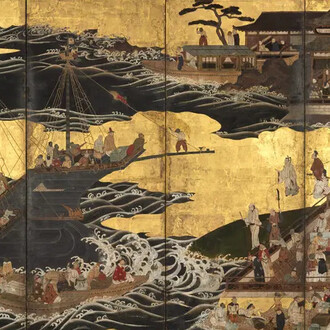Although the Enlightenment period in Europe (about 1685–1815) has long been celebrated as “the age of reason”, it was also a time of imagination when artists across Europe incorporated elements of fantasy and folly into their work in creative new ways. Imagination in the Age of Reason, pulled from the CMA’s rich holdings of 18th-century European prints and drawings, explores the complex relationship between imagination and the Enlightenment’s ideals of truth and knowledge. During this unprecedented time, artists used their imaginations in multifaceted ways to depict, understand, and critique the world around them.
The Enlightenment adopted a revolutionary emphasis on individual liberty, direct observation, and rational thought. Enlightenment society valued learning and innovation, encouraging an unprecedented flowering of knowledge with major advances in fields as diverse as art, philosophy, politics, and science. Important thinkers of the time questioned long-held beliefs, instead using scientific reasoning to uncover new, objective principles on which to base a modern society, free from superstition, passion, and prejudice.
During this same period, a number of artists reveled in the power of the imagination to expose hidden truths, conjure strange worlds, or concoct illusions. François Boucher and Francisco de Goya, among others, drew on their imaginations to devise novel compositions, envision far-off places and people, attract new buyers for their art, and comment on society and its values. They also blurred the boundaries of fact and fantasy, incorporating real and invented elements into their compositions, often without distinguishing between the two. Imagination was a dynamic tool through which Enlightenment-era artists marketed their work, revealed or obscured truth, entertained or educated viewers, and supported or criticized systems of power.
The exhibition presents an exceptional opportunity to see exciting recent acquisitions on view for the first time as well as rarely shown collection highlights, including prints and drawings by Canaletto and Goya and a pastel portrait by Swiss artist Jean-Étienne Liotard.
















